The Secluded And Mysterious Hermitage Nestled On a Cliff In Northern Italy
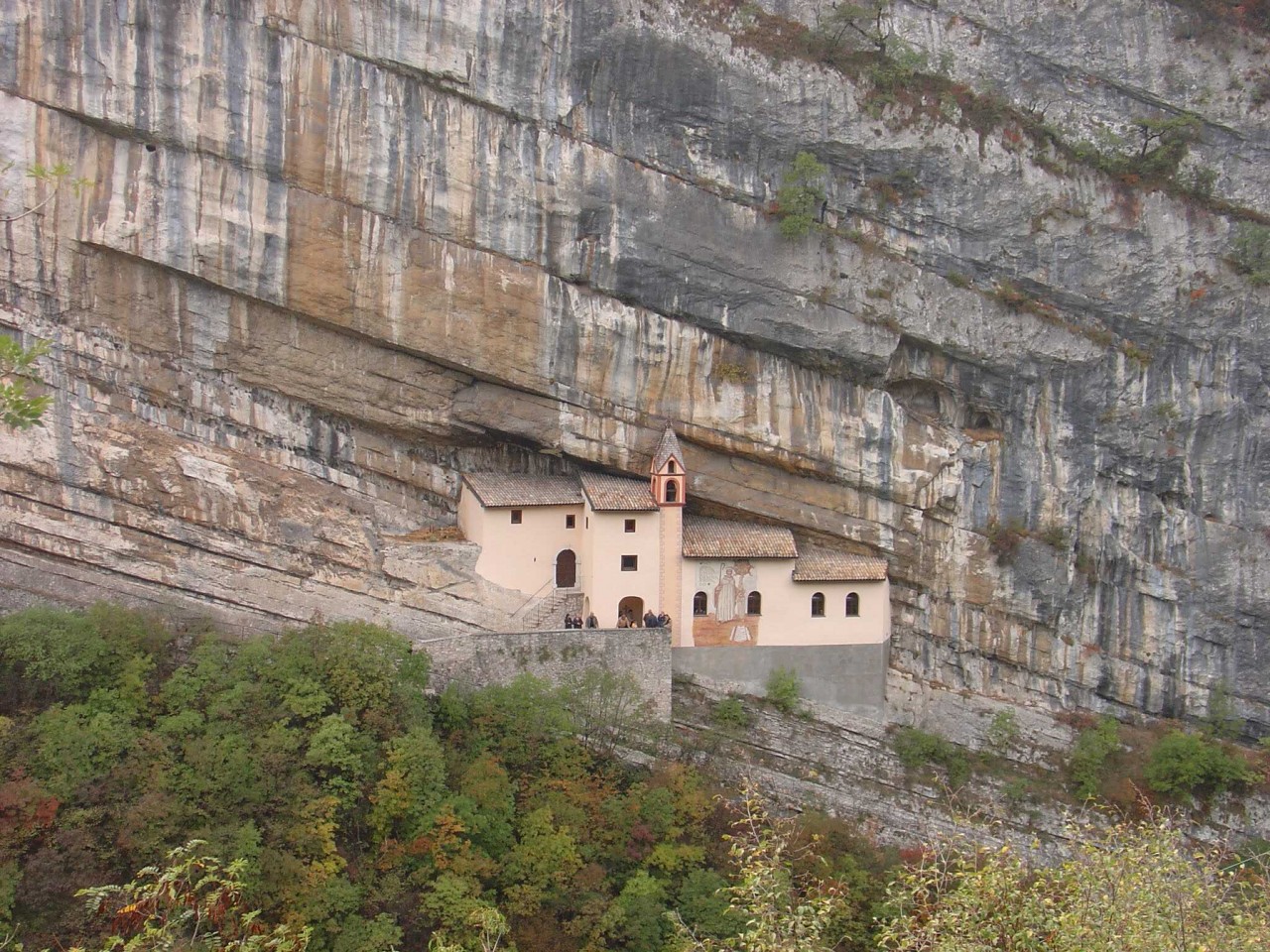 |
| Photo: Amazingsearth |
Eremo di San Colombano is a hermitage in Trambileno, Italy, notable for its location in the side of a mountain. Some natural caves, halfway up the rock wall of the gorge formed by the stream of Leno Vallarsa were certainly used from 753 (the date inscribed on the rock) from a Monaco hermit. The hermitage is located at Trambileno, near Rovereto. It is carved in the rock and can be reached by climbing a flight of 102 steps cut into the rock ledge one access after crossing the gorge of the river Leno.
Frescoes depict the fight between St. Columba and a dragon (an allegory of the struggle between good and evil), as well as the representation of Paradise, located in the cave. Another fresco with "Madonna and Saints" is the fifteenth-century altar of the church and keeps recordings with prayers and candles dated between 1505 and 1782, witnessed the pilgrimage to the shrine.
The folklore of Eremo di San Colombano
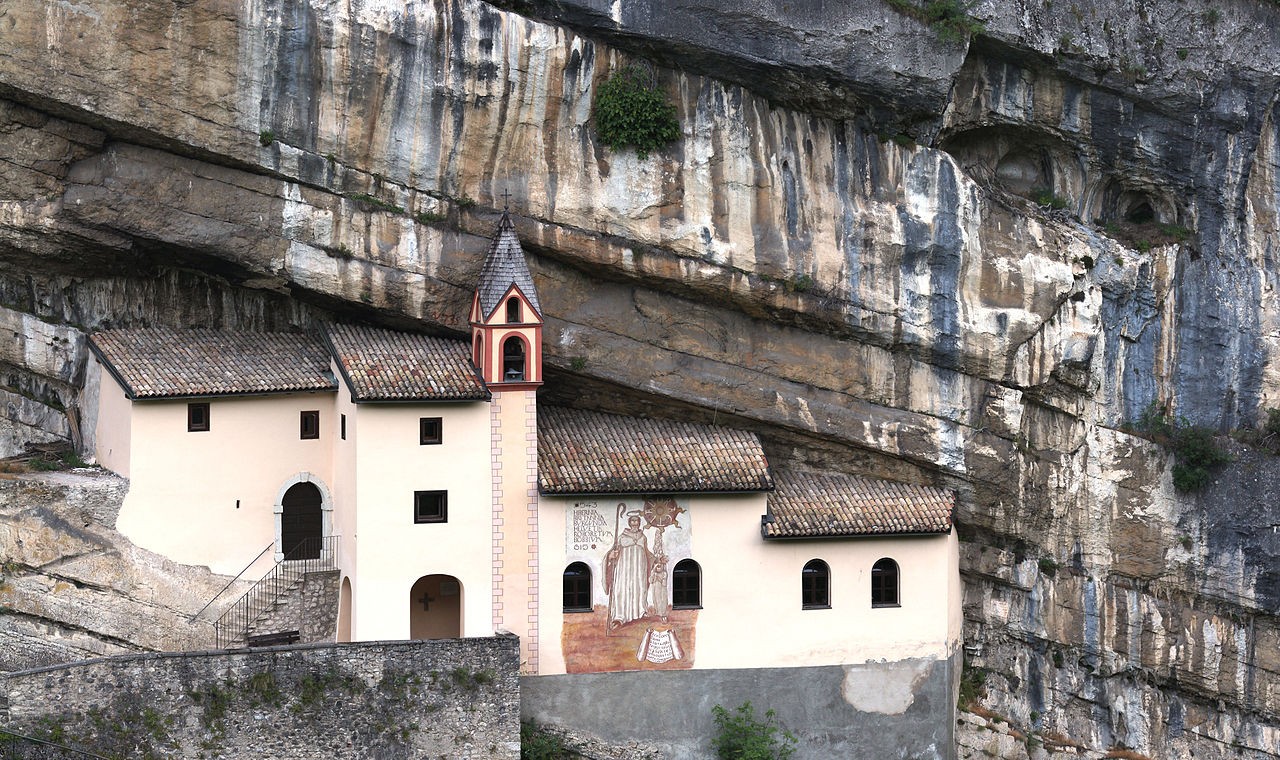 |
| Photo: Wikimedia Commons |
Deep in the Leno Valley of Trento Province in the far north of Italy, next to lake Lago di San Colombano, solitude is taken to a whole other level and isolation literally to new heights.
While it is somewhat expected for a hermitage to be hard to reach, San Colombano Church is not off the beaten track as isolated places of worship usually are.
Partly a natural cave and partly excavated into the rock-face, it hangs 400 feet above the ground right in the middle of the valley’s vertical cliff face. It’s been there since the 8th century and climbing is the only way to get to it.
But it’s worth it. Of all the churches and monasteries in Italy, a country regarded as a cradle of Christianity and the home of thousands of places of worship, only this one has a legend of a pesky dragon to tell and is named after a heroic saint who defeated the beast. Well-preserved drawings inside depict this David-and-Goliath epic battle from back in the day.
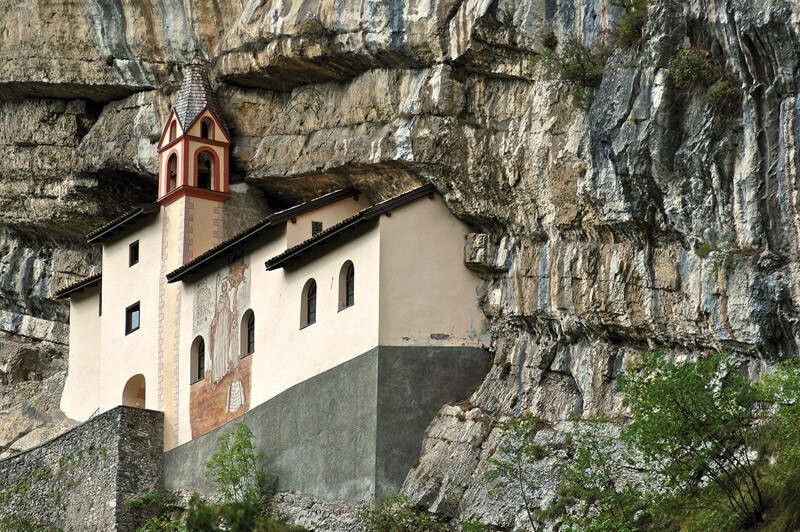 |
| Photo: Trentino |
A signpost for “Eremo di San Colombano” on the road from Rovereto to Vallarsa marks the path–iff a long pass through the narrow Leno gorge with gigantic cliffs looming on both sides could be even described as a path. Then follows a short bridge that allows for swift passage over the Leno di Vallarsa River, after which all that is left is a deadly cliff to scale, a couple of rocks, and 102 precarious steps to climb. “I want to be left alone” is what the post should read, for the place was definitely built to provide isolated spiritual contemplation.
But it wasn’t all that quiet and serene 12 centuries ago. If the church over the years offered refuge and solitude to men who wished to be left alone, to be still and tranquil, legend has it that in these caves lurked a dragon.
According to local folklore, the beast would wreak havoc through the area and, 400 feet below, the beauty of the Leno river was not just a feast for the beast’s eyes. For as long as people can remember the area has been a holy land–and the river a place where every small child was baptized; they made easy prey for the dragon who would snatch them up and carry them off to its lair.
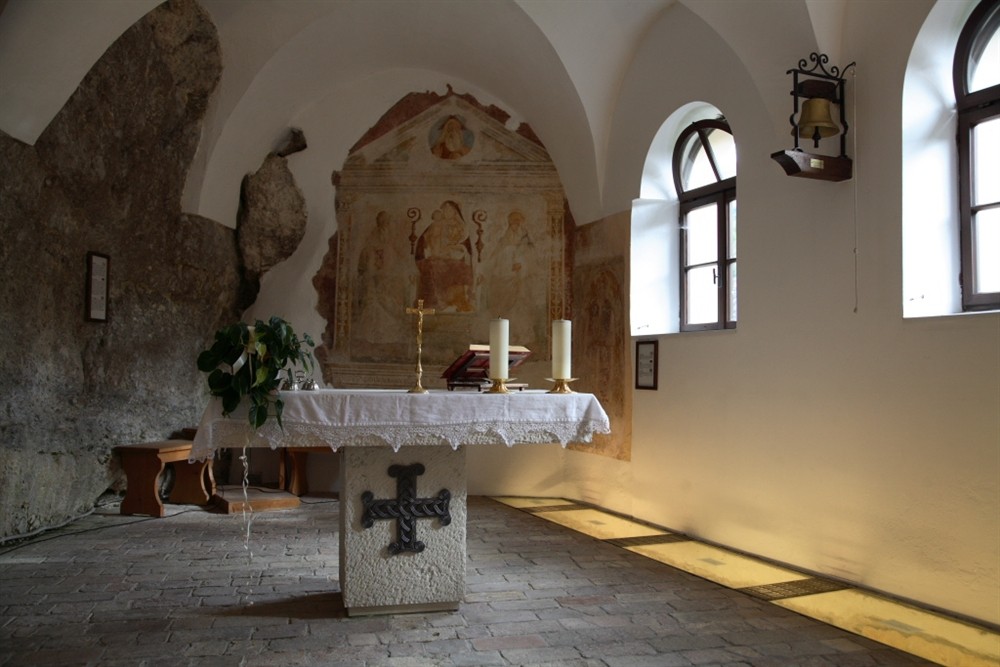 |
| Photo: Amazingsearth |
Many tried to slay the tormenting monster, but efforts all failed. Crushed to pieces, their bodies were just another full plate for the dragon to devour. Luckily, an Irish missionary from the Kingdom of Meath was in northern Italy to meet the royal family when he heard some rumors about this menace and rushed to see what’s what and, with God’s will, help the people who were suffering. No one knows how exactly, but St. Columban (the white dove) came out as the victor and a savior.
The dragon’s lair was then declared sacred and within a few years, the Leno Valley became a pilgrimage site. The saint passed away just a few years later, but it took almost a century and a half for the first daring pilgrim to set foot inside the sacred cave and become its hermit. And thus, somewhere around 750, what was a dragon’s nest grew into a shrine, the “Cave of the Hermits.”
A Solitude Heaven
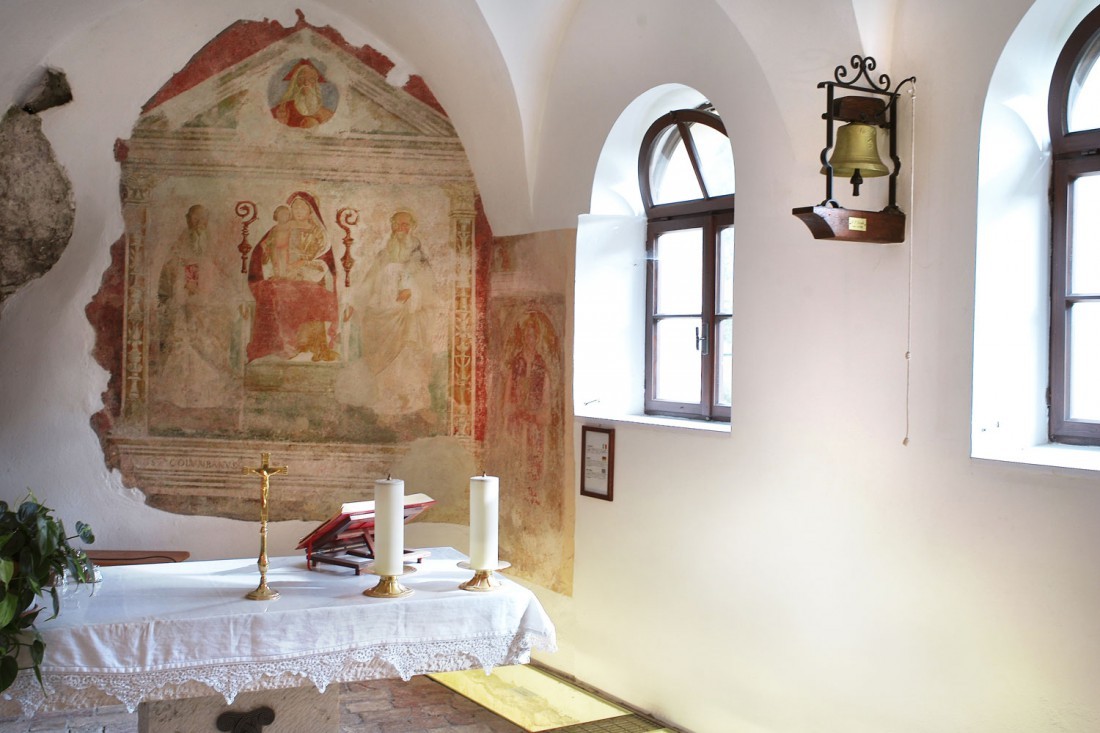 |
| Photo: Amazingsearth |
The church looks like a framed picture hanging on a straight wall. Inside, on its walls, among the many drawings and frescoes, is one made by the first pilgrim, a drawing that shows the epic battle of the saint and the dragon. Another is supposedly drawn by the last hermit who, in search of solitude, stepped inside and found peace of mind in the small church hanging high above the Leno River.
The Hermitage in its current form was created around 1319. It was abandoned in 1782 when the Catholic Church banned the practice of solitary retreat, but the locals never left the place to rot and for over two centuries did everything they could to preserve it.
The hermitage is accessed by a staircase of 102 steps carved into the rock. Frescoes depict the fight between St. Columba and a dragon (an allegory of the struggle between good and evil), as well as the representation of Paradise, located in the cave. Another fresco with "Madonna and Saints" is the fifteenth-century altar of the church and keeps recordings with prayers and candles dated between 1505 and 1782, witnessed the pilgrimage to the shrine.
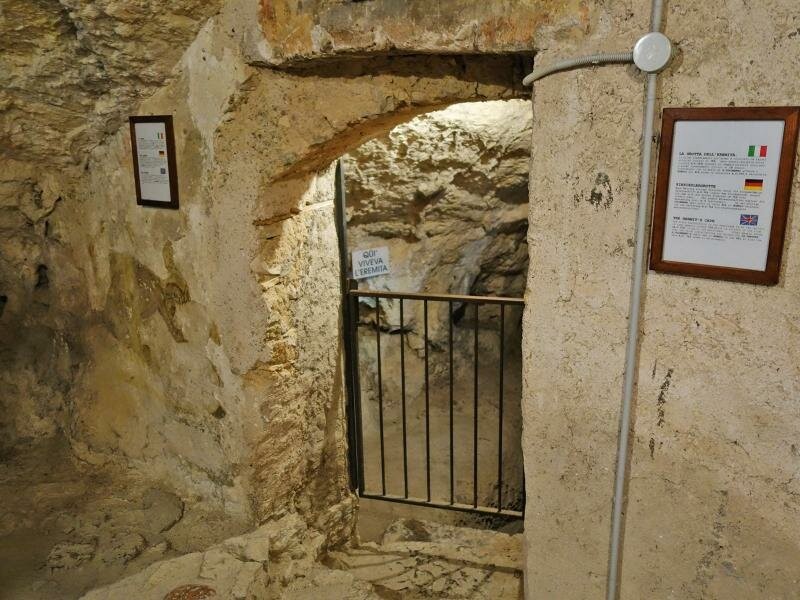 |
| Photo: Amazingsearth |
They are only the beginning. Eremo di San Colombano is the starting point of a divine trekking route called “The Treasures of Trambileno.” The trek ends where the Leno River flows in Lago di San Colombano, and right after, as a reward, the trekkers can enjoy a chance to taste the local cuisine at Bosco Dei Pini Neri restaurant in Trambileno.
 | The Mesmerizing Hormuz, “The Rainbow Island” Most Tourists Don’t Know With the ruby red beach, rainbow valleys and amazing sights, Hormuz Island has recently become the famous destination for tourists and travellers who want to ... |
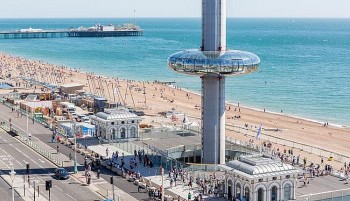 | Visit i360 – The World’s Thinnest Observation Tower Located in Brighton, East Sussex, London, i360 observation tower is the thinnest tower in the world with a diameter of under 4 meters, which makes ... |
 | Top 7 Best Castle Holidays in The UK Castles are a part of England's history, many of them stand the test of time and weather, and are turned into luxury hotels, offering nights ... |
Recommended
 Multimedia
Multimedia
Phong Nha-Ke Bang National Park Named Top Adventure Travel Site
 Travel
Travel
Vietnam Welcomes Record-High Number of International Visitors
 Travel
Travel
Luxury Train From Hanoi To Hai Phong To Be Launched In May
 Travel
Travel
Phong Nha Named Top Budget-Friendly Travel Destination for Spring 2025: Agoda
 Travel
Travel
Four Indian Films Introduced to Lao Cai Audience
 Travel
Travel
Vietnam to Waive Visas for Citizens from 12 Countries until 2028
 Travel
Travel
Ninh Binh Full-day Tour among World’s Top Experiences: TripAdvisor
 Travel
Travel


